Rank on Google's first page in 3 months
How to Ensure Content Relevance? [2023-24 Guide]
Aug 07, 2023 | Nishanth PK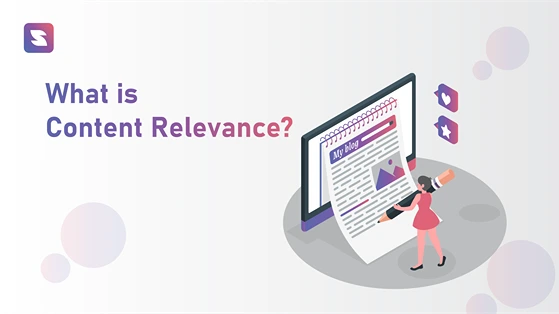
You are in search of something. You enter your query, and the search engine provides the results relevant to it. You clicked on the first one and skimmed through the content. It seems to be good, but the content seems to be not up-to-date.
You exit the website and click on the next one. This time, you look at the publishing date before reading the content. It has been over 2 years now, which means it is not up-to-date again. Exit and move on to the next one.
OR
In some cases, you wouldn’t be able to find any content that is relevant to you at all.
I don’t know how many of you have experienced it, but at some point, some of you must have. This is where content relevance comes into play.
Content relevance is the glue that binds your audience to your brand. It’s what keeps them engaged, returning for more, and ultimately, converting into loyal customers.
However, ensuring content relevance is not a one-time task. It’s a continuous process of understanding your audience’s evolving needs, staying updated with industry trends, aligning content with SEO strategies, and more.
In this blog post, we’ll dive deep into each of these areas and help you ensure your content stays relevant, impactful, and engaging. We also offer invaluable insights and actionable tips to help you create content that truly matters to your audience.
So, let’s get started on this journey to content relevance.
The Importance of Content Relevance in Digital Marketing
The phrase “content is king” is frequently thrown around in digital marketing. However, while content might be king, relevance is the queen that gives the king his power. It is what makes your content valuable, engaging, and impactful.
But why is relevant content so vital? Let’s take a look.

Boosts SEO
Search engines like Google focus on providing users with the most relevant and high-quality content. And that’s where the concept of relevance comes into play. When you create content that aligns with your audience’s search intent, Google recognizes it as relevant. This consecutively improves your search engine rankings.
Moreover, relevant content is more likely to earn backlinks from reputable sources.
Enhances Audience Engagement
Relevant content caters directly to your audience’s interests, needs, and pain points. When your audience finds content that speaks to their circumstances, they are likelier to engage with it.
The engagement can be likes, shares, comments, or spending more time on your site. This interaction not only enhances the user experience but also sends positive signals to search engines about the value of your content.
Improves Conversion Rates
When you create content that resonates with your audience, you build trust and establish authority in your niche. Relevant content helps guide your audience through the buyer’s journey. From awareness to consideration and finally, to the decision stage, your content can guide them.
By consistently providing value through relevant content, you can increase the chances of turning visitors into loyal customers.
Stays Ahead of Competition
With so much content vying for attention online, relevant content can help your business stand out. Think of yourself. If you have any doubts, you would certainly go straight to your trusted source. Similar is the case here.
As a result, it strengthens your brand identity and positions yourselves as thought leaders in your industry.
Now the question will be how to stay relevant. Well, the first step is to understand your target audience. Let’s find out more.
Understanding Your Audience
The foundation of content relevance is to produce content that resonates. It’s critical to know who you’re speaking to. This is where understanding your audience comes into play. It’s akin to a conversation.
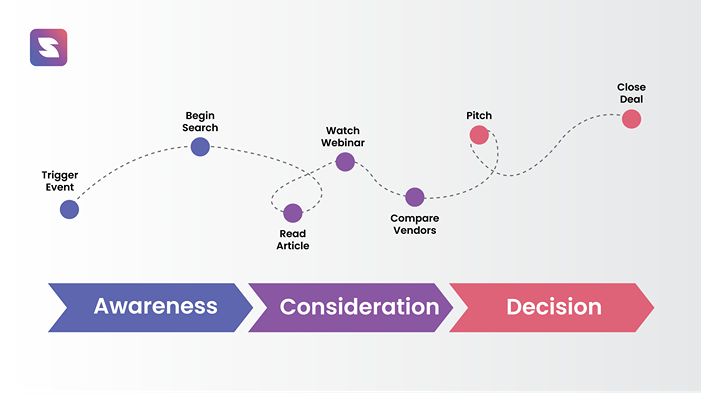
The more you know about the person you’re talking to, the more meaningful and engaging your conversation will be. In this case, your audience is that person, and your content is the conversation.
Audience Research
The first step towards understanding your audience is through diligent research. Get to know their demographics, interests, needs, challenges, online habits, and preferences. Here’s how you can go about it:
- Surveys and Interviews: Directly ask your audience about their needs and preferences. Use tools like Google Forms or SurveyMonkey to conduct online surveys. Conduct interviews or informal chats to get deeper insights.
- Social Media Analysis: Use social media listening tools to understand what your audience is talking about. Learn about their common questions and the trending topics in your niche.
- Website and Email Analytics: Analyze your website and email data. Look at the popular pages on your site, the content with the most engagement, and the type of content that drives conversions.
Audience Segmentation
Once you’ve gathered data about your audience, segment them into different groups based on shared characteristics. This could be demographics, behavior, psychographics, or geographic location.
Audience segmentation allows you to tailor your content to meet the specific needs and preferences of each segment, enhancing its relevance.
Creating Audience Personas
To bring your audience segments to life, create detailed audience personas. A persona is a semi-fictional representation of your ideal customer based on your research. It usually includes demographic information, interests, pain points, preferred online platforms, and more.
Following is an example of a buyer persona.
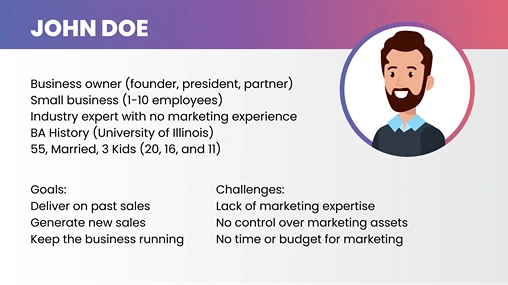
By developing these personas, you can clearly understand who you’re speaking to with your content. It allows you to walk in your audience’s shoes and understand their perspective better, leading to more relevant and resonating content.
Remember, understanding your audience is an ongoing process. People’s interests and needs change, and what’s relevant today might not be tomorrow. Regularly revisit your audience research, segmentation, and personas to ensure your content continues to hit the mark.
Staying Abreast with Industry Trends: Keeping Your Content Fresh and Relevant
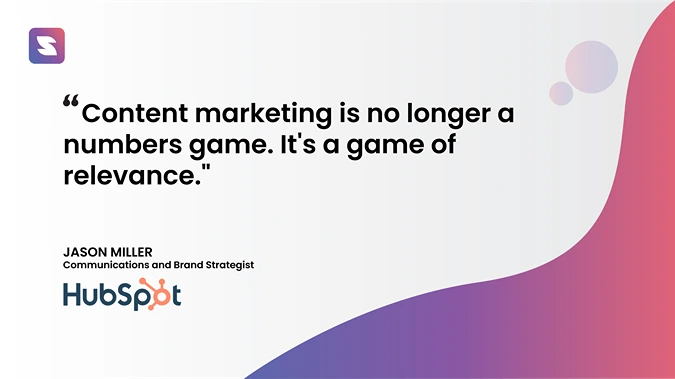
No matter how well you understand your audience, your content won’t maintain its relevance if it doesn’t keep up with the times.
Industries evolve, technologies advance, and trends shift, sometimes rapidly. So, to ensure your content remains relevant, it’s crucial to stay abreast of the latest trends in your industry.
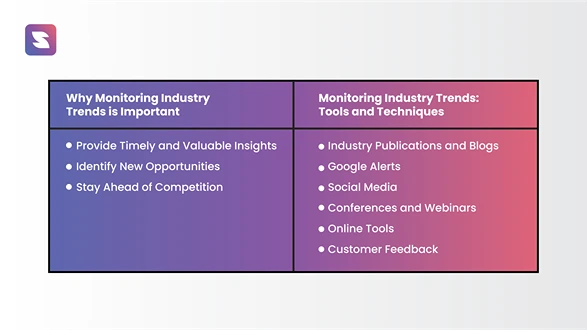
Why Monitoring Industry Trends is Important
Understanding industry trends allows you to:
- Provide Timely and Valuable Insights –
By covering the latest developments, you position your content as a reliable resource for your audience to stay updated.
- Identify New Opportunities –
Trends often bring new opportunities. Whether it’s a gap in the market, a new audience segment, or an emerging topic, being aware of trends allows you to seize these opportunities.
- Stay Ahead of Competition –
Keeping track of industry trends helps you stay ahead of your competitors. If you’re consistently delivering fresh, relevant content, you’ll remain top of mind for your audience.
Monitoring Industry Trends: Tools and Techniques
- Industry Publications and Blogs: Follow reputable sources in your industry. Regularly read industry-specific blogs, magazines, and journals.
- Google Alerts: Set up Google Alerts for specific keywords related to your industry. You’ll receive regular email updates on the latest news and articles.
- Social Media: Platforms like Twitter and LinkedIn are great for staying up-to-date with industry news and trends. Follow industry leaders, influencers, and relevant hashtags.
- Conferences and Webinars: Attend industry-specific events, either in-person or online. These can provide valuable insights into current trends and future predictions.
- Online Tools: Tools like Buzzsumo, Feedly, or SuiteJar can help you monitor trending topics, track outdated content, and discover popular industry content.
- Customer Feedback: Listen to your customers. Their questions, concerns, and feedback can provide valuable insights into emerging trends.
Although staying on top of industry trends is important, not every trend will be relevant to your audience. Therefore, always tie it back to your audience research and personas to ensure the trends you cover align with your audience’s interests and needs.
Keyword Research and SEO: Paving the Way for Content Relevance
Understanding your audience and keeping up with industry trends is critical for content relevance. But how do you make sure that your relevant content reaches your audience? This is where Search Engine Optimization (SEO), specifically keyword research, comes into play.
The Role of Keyword Research in Content Relevance
Keyword research is about discovering the phrases your audience searches for on search engines like Google. By integrating these keywords into your content, you ensure it aligns with your audience’s search intent.
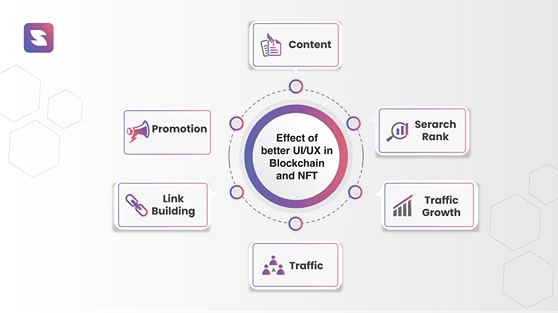
When your content matches what your audience seeks, it becomes more relevant and valuable. This leads to better search engine rankings and increased visibility.
Best Practices for Keyword Research
1. Use Keyword Research Tools
Tools like Google Keyword Planner, SuiteJar, or SEMrush can help you identify popular keywords in your niche. They provide insights into the search volume, keyword difficulty, and competition.
Here’s something to help you choose the best keyword research tool for your niche.
2. Consider Different Types of Keywords
There are many types of keywords to consider. While writing a web page, focus on a specific keyword [primary keyword]. Also, ensure the content intent of the primary keyword aligns with the web page content.
Apart from primary keywords, use the following keywords as well.
- Secondary keywords
- Long-tail keywords
- Semantic keywords
While primary keywords drive more traffic, long-tail keywords have a higher conversion rate as they’re more specific. Learn more about the types of keywords.
3. Analyze Your Competitors
Look at the keywords your competitors are targeting. This can provide new keyword ideas and help you understand the competitive landscape.
4. Consider Searcher Intent
Align your keywords with searcher intent. This involves understanding whether users are looking for information on a particular website or looking to make a purchase. Keywords also differ depending on the search intent.
There are –
- Informational type
- Navigational type
- Transactional type
- Commercial type
The transactional and Commercial type keywords are the ones you should focus on if you want to convert your visitors.
Now that we have discussed the best practices, let’s see how SEO increases content relevance.
How SEO Increases Content Relevance?
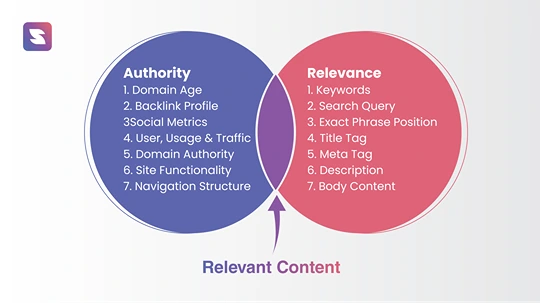
Keyword research is but only a small segment of SEO. It’s about optimizing your content and website to make it easier for search engines to crawl, understand, and index. Covering all three main elements of SEO can improve the overall website performance.
The elements, if you didn’t know, are on-page, off-page, and tech SEO.
If you are doing an audit, here’s something to help you with it. This ultimate technical SEO checklist has everything you need to do with proper guidelines. Click below to download the checklist template now!
By using SEO best practices, you increase not only your content’s visibility but also its relevance. SEO-friendly content will more accurately meet your audience’s search intent, providing the answers they seek and enhancing their overall experience with your brand.
Here are some SEO best practices to improve organic traffic.
Creating Evergreen Content: The Key to Long-lasting Relevance
We talked about the importance of keeping the content relevant. The best practices, tips, and so on. But what if we told you there is a way to make the content relevant for a lifetime?
Intriguing, right?
You guessed it, creating evergreen content is the key.
Unlike other content pieces, this type of content remains relevant and valuable over a long period. It will continue to attract traffic, engage audiences, and drive conversions long after it’s been published.
So how can you create it? Read on to learn the tips for creating evergreen content.
Tips for Creating Evergreen Content
1. Choose the Right Topics
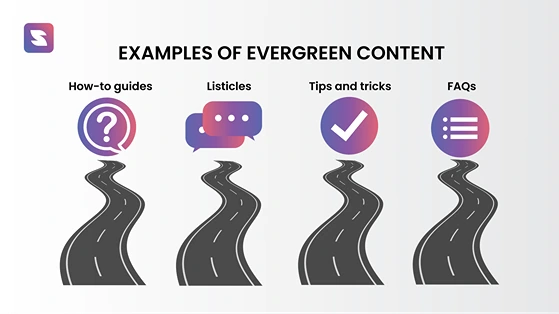
The best evergreen content starts with the right topic. Choose subjects that will continue to interest your audience in the long run. Following are some examples of evergreen content –
- How-to guides
- Listicles
- Tips and tricks
- Answers to frequently asked questions in the industry
2. Focus on Quality
Evergreen content should be comprehensive, well-researched, and high-quality. It should provide real value to your audience, whether solving a problem, teaching a skill, or providing new insights.
3. Optimize for SEO
As with any content, ensure your evergreen content is optimized for search engines. Use relevant keywords, create compelling meta descriptions, and incorporate internal and external links.
Read on to learn more about how to optimize content for SEO.
4. Keep it Updated
Even evergreen content might need occasional updates. Check your evergreen content regularly to ensure it stays accurate and relevant. If necessary, update it with new information or examples.
Evergreen content is a great option for you to keep the relevancy of your content. It helps provide consistent value to your audience, attract steady traffic, and establish your authority in your field.
Regularly Updating Content: Ensuring Continued Relevance
We talked about using evergreen content for relevancy for a lifetime. But let’s face it. It’s imperative that we use different types of content to attract and convert visitors. And in the fast-paced digital world, information quickly becomes outdated. What was relevant and accurate a year ago may not be so today.
Following are some of the types of content that go outdated.
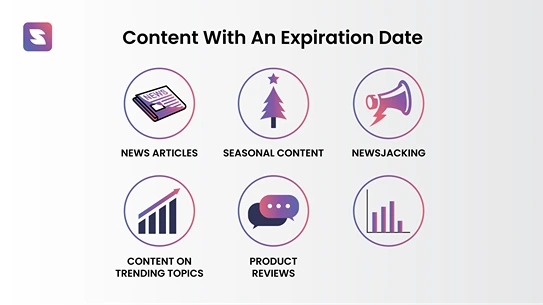
What’s the solution? Update it regularly!
Regularly review and update your content and keep it relevant, valuable, and SEO-friendly.
Why Regular Content Updates Are Important?
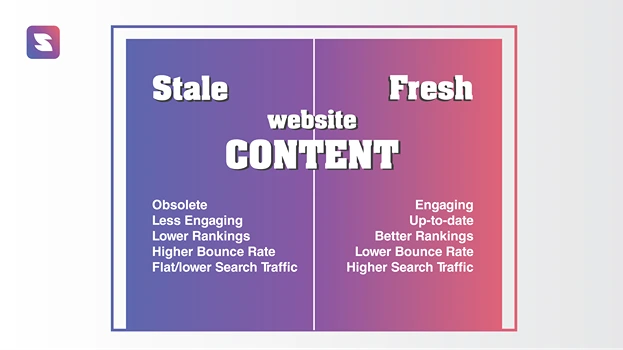
1. Maintains Relevance
By updating your content, you ensure that it remains accurate and continues to provide value to your audience. This helps maintain audience trust and engagement.
2. Improves SEO
Search engines favor fresh, updated content. Regularly updated content is more likely to achieve higher rankings, increasing visibility and traffic.
3. Boosts Conversion Rates
Updated content is more likely to meet your audience’s current needs and preferences, making it more effective at driving conversions.
So how & when to update the content?
A content audit is the best way to start. It is a systematic review of your content to assess its performance and identify improvement areas. Let’s see how to conduct one.
Best Practices for Content Audits
Here’s how you can conduct a successful content audit:
Inventory Your Content
Create a list of all your content pieces. Include key details like the content’s title, type, publication date, and performance metrics (like page views, engagement rate, etc.).
Analyze Performance
Review your content’s performance. Identify what’s working well and what’s not. Look for patterns or trends that might explain why some content performs better than others.
Identify Outdated Content
Look for content that’s outdated or no longer relevant. This might include old statistics, discontinued products, or outdated practices.
You can also use tools like SuiteJar, which analyzes and outlines all the outdated content on your website.

Update or Remove Old Content
Decide whether to update or remove outdated content. If the content is still relevant but contains outdated information, update it. This could mean adding new information, updating statistics, or refreshing images.
If the content is no longer relevant or accurate, consider removing it or redirecting it to a more relevant page.
Read our guide on how to find and remove outdated content from your website.
Plan for Regular Audits
Content audits should not be a one-time activity. Plan for regular audits (for instance, every 6-12 months) to keep your content fresh and relevant.
Here’s something to help you efficiently update old content pieces on your website.
Just keep in mind that keeping your content updated is a key aspect of content relevance. It ensures your content continues to provide value, improves SEO, and helps maintain a positive user experience.
Using Analytics to Measure Content Relevance: Quantifying Success
Once your content is published and optimized, how do you know if it’s hitting the mark? This is where analytics come into play.
By leveraging various analytics tools and tracking KPIs, you can assess whether your content is relevant and resonating with your audience. Let’s first look at the analytics tools.
Using Analytics Tools
Google Analytics
Google Analytics is a powerful tool that offers valuable insights into your content’s performance. You can track metrics like page views, bounce rate, average time on page, and more. Also, you can use it to see the keywords people use to find your content.
It should be noted that the new GA4 is quite intricate. Therefore, navigating and understanding data from it can be difficult. If you are experiencing the same, we suggest using tools like SuiteJar.
Its – Easy Web Analytics – features collate and visualize all crucial data in one place. This allows easy interpretation of the data, helping better understand the data and strategizing.
SEO Content Analysis Tools
Tools like SEMrush, SuiteJar, and Moz can provide in-depth SEO analysis of your content. They can help you track your rankings for specific keywords, analyze backlinks, and uncover SEO issues that might hurt your visibility.
Here, take a look at the top 9 SEO content analysis tools in the market.
Social Media Analytics
If you’re sharing content on social media, use platform-specific analytics to see how your content is performing. You can track engagement metrics like shares, likes, comments, and clicks. The content piece the users engage more with shows you what topic to focus on.
Now that we know the tools to use, let’s see what KPIs are to monitor.
Key SEO KPIs to Track
Following four crucial key performance indicators to monitor –
Organic Traffic
This refers to the visitors who find your content through a search engine. A steady increase in organic traffic is usually a good sign of content relevance.
Bounce Rate
This measures the percentage of visitors who leave your site after viewing only one page. A high bounce rate might indicate that your content is not meeting your audience’s expectations.
Average Time on Page
This measures how long, on average, visitors stay on your page. A longer average time can indicate that your content is engaging and relevant.
Conversion Rate
This measures the percentage of visitors who complete a desired action (like making a purchase, filling out a form, etc.). A high conversion rate often indicates that your content is effectively meeting your audience’s needs.
Keyword Rankings
This refers to your content’s position in search engine results for specific keywords. High rankings for your targeted keywords indicate that your content is considered relevant and authoritative by search engines.
The above-mentioned are a few among the many. Read on to get the complete list of SEO KPIs you need to track and analyze. This data-driven approach allows you to make informed decisions, fine-tune your content strategy, and continually improve your content’s relevance.
Conclusion
To conclude, ensuring content relevance is not just about ticking boxes on a checklist. It’s a dynamic process that involves understanding your audience deeply, staying updated with the latest trends in your industry, and continuously refining your content strategies.
Keep in mind that valuable and relevant content is the cornerstone of building trust and fostering sustained relationships with your audience. It’s a long-term investment that pays off in the form of loyal customers. This implies increased engagement and, ultimately, business growth.
So, keep your content relevant, engaging, and valuable, and you’ll see the results in your bottom line. And the best way towards this is by leveraging powerful SEO tools.
SuiteJar is one such tool.
It offers features to find outdated content, optimize them and provide valuable insights into how to rank them on Google’s first page.
Try out the tool for free and see how it can help keep your content relevant and up-to-date.